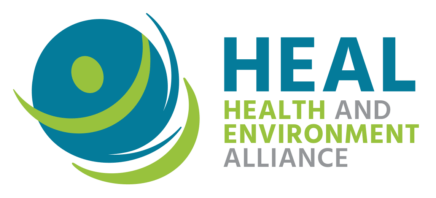Climate change, environmental pollution and biodiversity loss affect people’s health and generate multi-billion-euro economic losses, as a briefing produced by HEAL Poland under the patronage of the Institute of Water Economy and Meteorology of the National Research Institute and the Polish Federation of Asthma, Allergy, and COPD Patients Associations highlights.
The Health and Environment Alliance (HEAL) is the leading European not-for-profit organisation addressing how the natural and built environment affects health in the European Union. HEAL welcomes the priority that the EU Green Deal gives to tackling pollution for a healthy planet for healthy people, and the foreseen EU Action Plan “Towards a Zero Pollution Ambition for air, water and soil – building a Healthier Planet for Healthier People”.
With a view to better protect health and prevent disease and ill-health, HEAL considers it essential that the Zero Pollution Action Plan (ZPAP) includes tangible measures, timelines and goals, to swiftly achieve a reduction of the environmental and climate-related burden of disease. According to the latest figures from WHO and EEA, 1 in 8 deaths in the EU are attributable to the environment. In its 2020 SOER the EEA reported that “exposure to fine particulate matter is responsible for around 400 000 premature deaths in Europe every year”, “human health and well‑being are still affected by noise, hazardous chemicals and climate change” and “accelerating climate change is likely to bring increased risks, particularly for vulnerable groups.”
Ending health harm from pollution requires firm preventive and remedial action and needs political will and commitment at all levels of policy making. Protecting every human being from pollution – especially those that are most vulnerable – requires developing and implementing disease preventing policies that a) build on the latest science, b) prioritise prevention and precaution (e.g. preventing pollution at source) and c) are enshrined in binding legislation with clear goals and timelines.
 In HEAL’s view, the ZPAP has to build on 3 principles:
In HEAL’s view, the ZPAP has to build on 3 principles:
- Zero harm from pollution
Everyone is affected by pollution, and as a society, we are only as strong and resilient to it as the most vulnerable among us. The aim of a zero pollution action plan should thus be to urgently and drastically reduce the magnitude of environmental stressors on the entire population and those with one or multiple forms of biological or social vulnerability, such as children, older people, those already sick and people living in poverty. The ZPAP should also aim to prevent impacts of pollution in early life and at critical windows of development, which can increase the risk of developing disease much later in life, and tackle the complexity of pollution exposure, e.g. exposure to multiple stressors over a day and over a lifetime and impacts of pollution mixtures.
The ZPAP should better recognise the interlinkages between environmental, health and social inequalities and propose integrated measures.
- Zero money for pollution
Preventing pollution means ending direct or indirect public financing of polluting processes. This requires fully aligning the EU budget and COVID-19 recovery funds with the zero pollution objective of cutting pollution at the source. A crucial tool to attain this objective is for the EU to adopt a comprehensive climate and environmental conditionality list for the MFF and Next Generation EU. This list should be in line with the proposal HEAL formulated jointly with the members of the Green 10 coalition: https://bit.ly/35a1LCh
The ZPAP should also further the full application of the polluter-pays-principle and truly encourage polluting industries to switch to ‘do no harm’ processes.
- Zero delay in stopping pollution
Answering the urgent need to protect health from pollution requires a short timeline to ban and phase-out toxic substances and transform polluting economies and ways of life. In order to protect health today and in the future, HEAL urges the European Commission in particular:
- to enable the path to achieving climate neutrality by 2040, including through upping the EU’s 2030 GHG target to at least -65%, and ending subsidies to any fossil fuels by 2025,
- to achieve good air quality outside and inside with no significant health harm by 2030: by swiftly proposing the full alignment of EU air standards with WHO guidelines and the latest science – with implementation by the next EU elections of 2024; by further cutting pollution at the source; and, by continuing to act on exceedances of air standards, and giving greater policy priority to healthy indoor environments.
- to end chemical pollution in the air, water and soil by moving to 100% non-toxic material cycles by 2030.




